This collection is designed to accompany an author study on Leo Lionni.
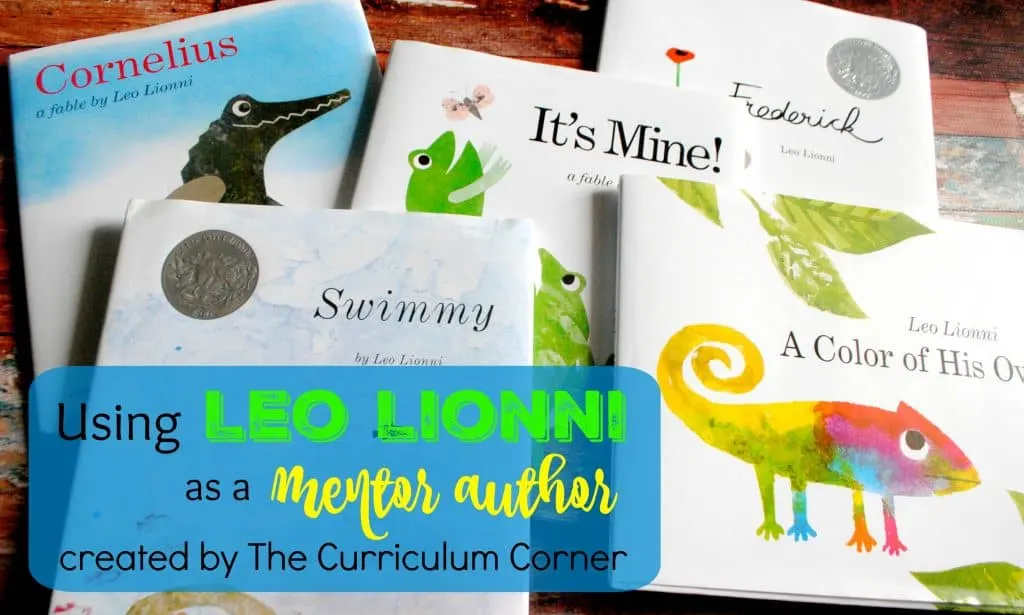 This author study about Leo Lionni is a unit designed for kindergarten and first grade. You may find that some of the resources and activities will help you to differentiate in your classroom or allow for more or less guidance at centers or in your small groups.
This author study about Leo Lionni is a unit designed for kindergarten and first grade. You may find that some of the resources and activities will help you to differentiate in your classroom or allow for more or less guidance at centers or in your small groups.
You can download the complete collection by clicking on the orange link at the bottom of the post.
Below we have listed five Leo Lionni books and a brief description of what is included for each in the download.
Noticings Anchor Chart – watercolor paintings, white backgrounds, a short description on the back, simple font, a fable by…, colorful front and back pages with a repeating print, animals as the main characters, sometimes a character’s name is the title
Leo Lionni Mini Biography Book – Simple sentences with black and white photos? audio recording
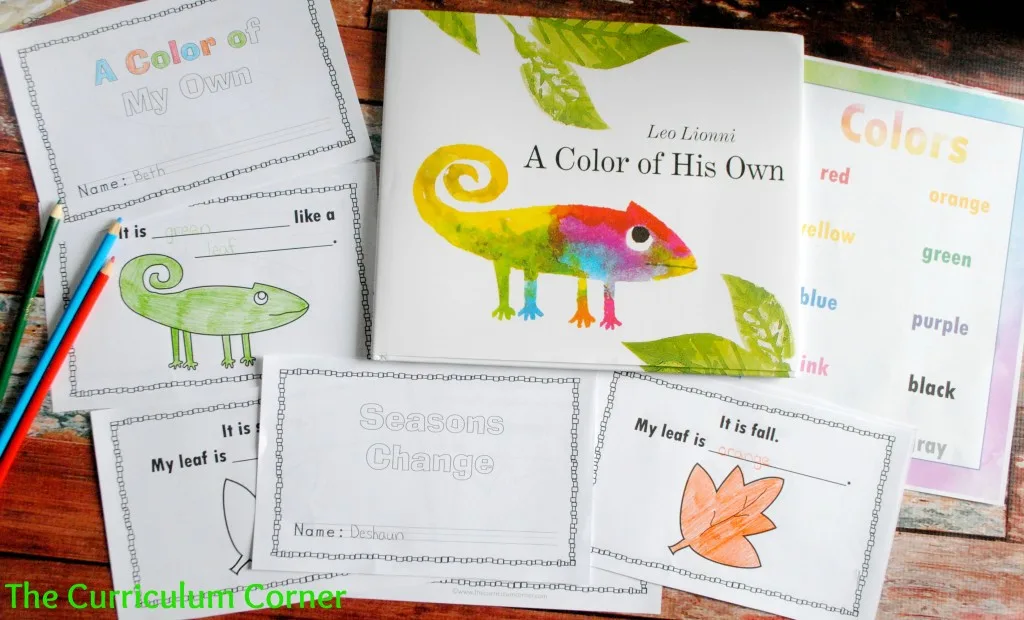 A Color of His Own – Focus on Colors
A Color of His Own – Focus on Colors
A Color of My Own Mini-Book – This is a beginning color book that has students thinking about the colors of things in their environment. They color the chameleon whatever color they choose, but then have to think of something else that is that same color.
Colors & Color Words Anchor Chart – Print this anchor chart for individual students or tables or hang in your classroom for students to use as a resource in writing.
Seasons Change – These three pages can be used to help teach the seasons to young learners or as simple story planners. For the page with blank boxes students could draw a picture or write simple words about something they might do in the seasons and then use that as a planner for a book they can write. For the pages with the chameleon and the leaves, students could think about the colors for each season. These could also be used as planners for simple stories/books.
Seasons Change Booklet – This is another resource you can use to help teach the seasons and talk about what happens to leaves during each of the seasons.
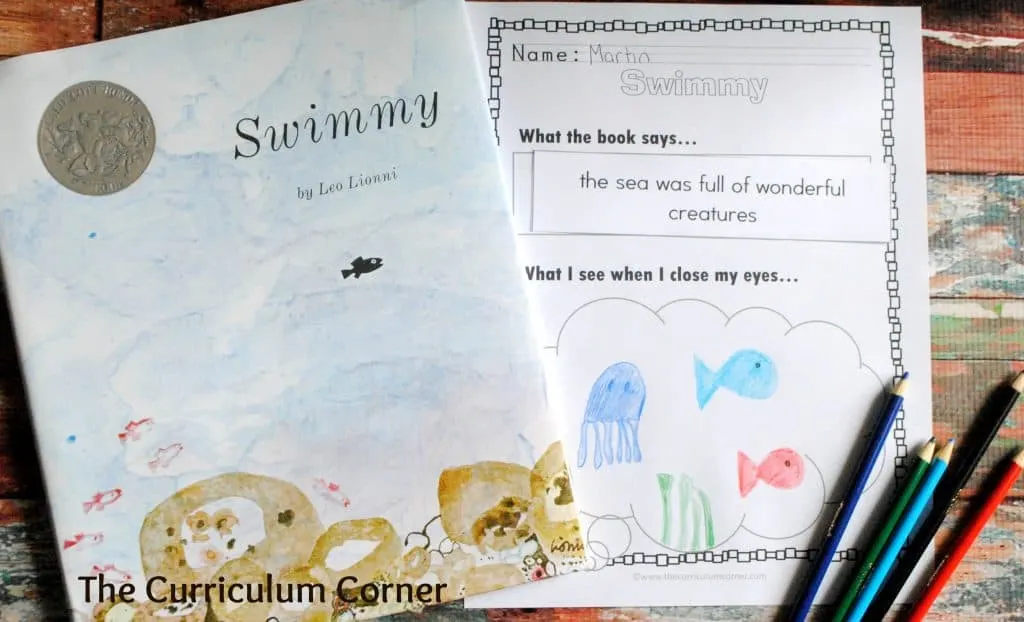 Swimmy – Focus on Visualization & Descriptions
Swimmy – Focus on Visualization & Descriptions
Swimmy Visualization – The story of Swimmy has words that might be a great way for students to learn about visualization. Share with your students that authors use descriptive words to help us see in our minds what we are reading about. To start, you might read a phrase from the book, have students close their eyes and then tell what they see in their heads. We have also created a student recording page and two additional pages that contain phrases from the story. Students glue a phrase in the box and then draw a picture that the phrase causes them to see in their heads. (Some of the phrases are easier so that you can differentiate a bit for your learners.) You might choose to do this activity before reading the story aloud and sharing pictures with the students.
Using My Words – We have also provided an extension of this lesson that would move students into thinking about visualization in their own writing. This lesson might need to involve some discussion of word choice & vocabulary, as well as descriptive language. We have created three graphic organizers for students to use as they plan words for their writing that will help their readers to better visualize the topics and events of their stories.
My Swimmy Fish Mini Booklet – This simple booklet can give your students a beginning understanding of similes (even if you don’t call them that). Students fill in the blanks with words to help describe the various animals from the story Swimmy.
How Cornelius Feels – This page has students reading about what happens in the story and thinking about how those events might have made Cornelius feel.
Emotions Anchor Chart – This is a resource to discuss with your students to help them identify emotions authors might share in their stories.
Writers Share Emotions – This might pair with a close look at characters’ expressions and the words an author uses on pages of a book to show emotion. It is a simple illustration page to go with the identification of emotions in characters. Students can draw pictures or use words to tell about the emotions in each box.
Sharing My Feelings Book – This could serve as an emotions book for students on its own or it might simply be used to spark further ideas for writing. Students write about what makes them feel certain ways and then illustrate their sentences.
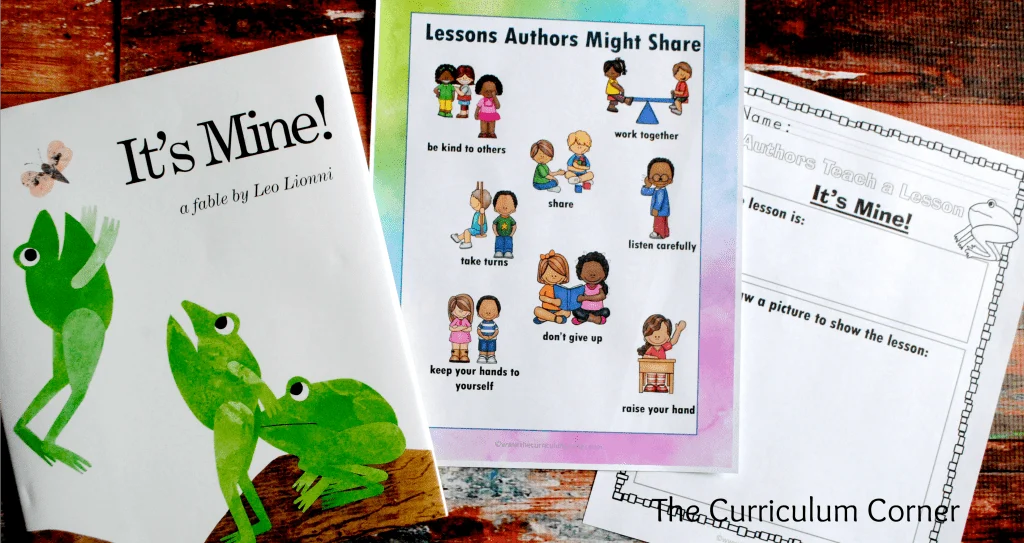 It’s Mine! – Focus on Lessons that Stories Teach
It’s Mine! – Focus on Lessons that Stories Teach
Lessons Authors Might Share Anchor Chart – This chart includes simple lessons young authors might choose to write about. It focuses on social skills in the classroom because those would be familiar to young kids. You might also choose to brainstorm a larger list of lessons that published authors teach. This could include the reading or recalling of several previously read stories.
Leo Lionni’s Lesson in this Story – This graphic organizer can be used as a mini-lesson for your whole class or you could have students work in pairs or small groups to fill it out and then discuss their thoughts.
Setting – If you are still teaching setting in your classroom you can use this page at a literacy and/or listening center with It’s Mine! to reinforce the concept of where a story takes place.
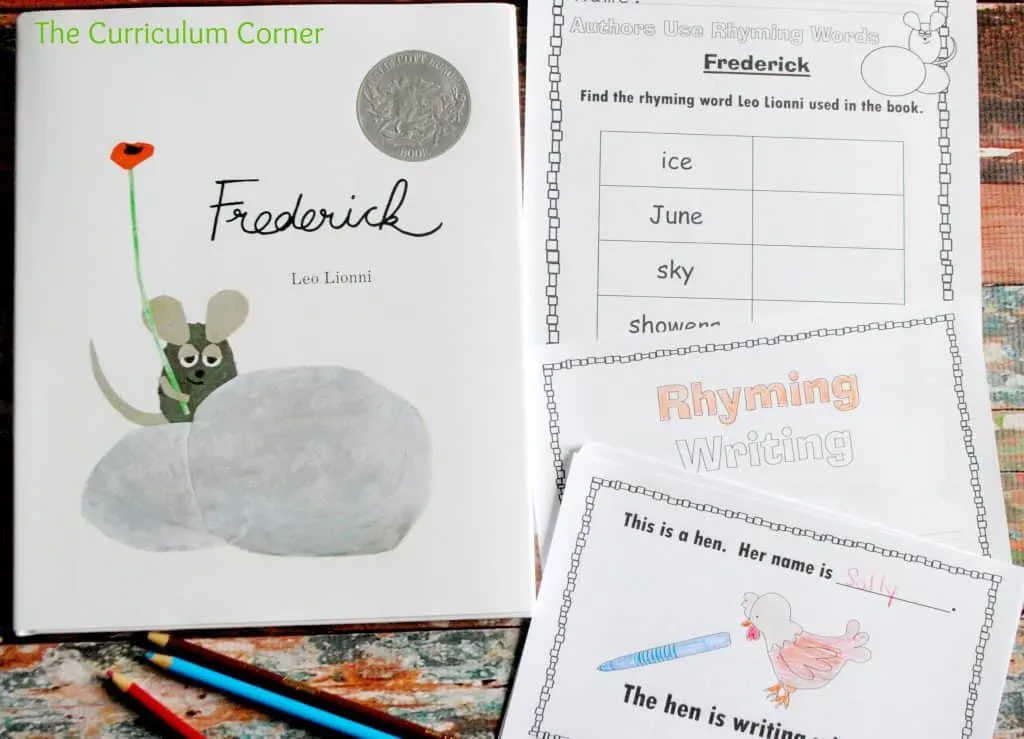 Frederick – Focus on Rhyming Words
Frederick – Focus on Rhyming Words
Authors Use Rhyming Words – Students are typically quick to notice rhyming in stories. This page gives them the opportunity to look at words from the story Frederick and search to find the words Lionni used for his rhymes. If you need some differentiation, you might choose to do this as a whole class. You could also write the rhyming words on the board (or provide word cards) so students don’t need to search the text.
Writing Rhymes – This simple three page book can be an engaging way for your students to think of rhymes. They first must think of a name that rhymes with each animals and then use the picture to write the final rhyming word.
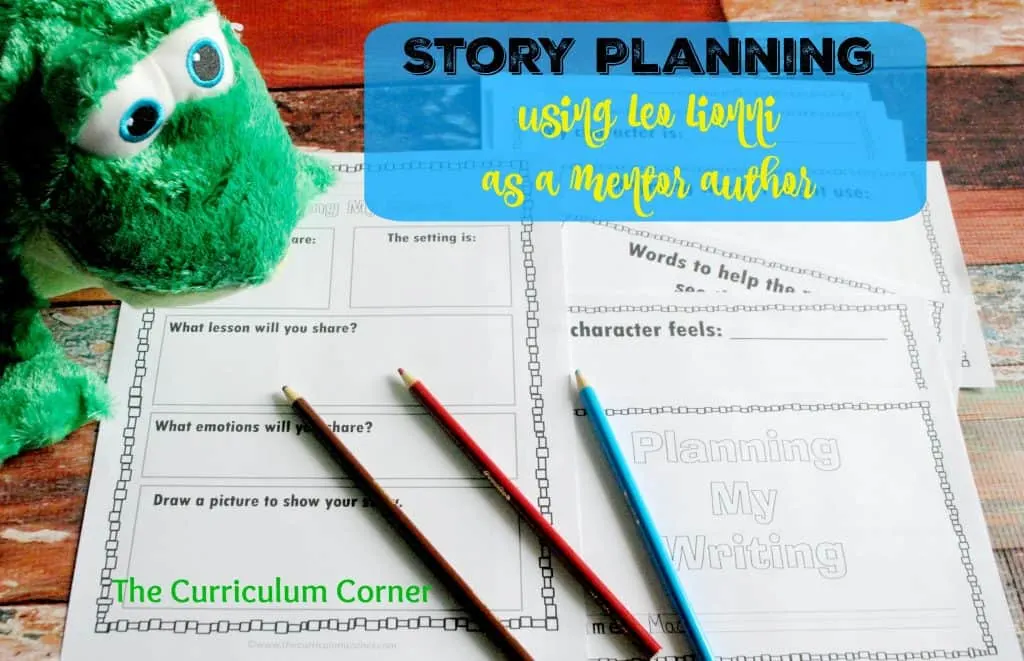 Other Leo Lionni Writing Ideas & Resources:
Other Leo Lionni Writing Ideas & Resources:
Story Planning Booklet – This booklet contains six pages that will help your students to plan a story using ideas from their learning about Leo Lionni as an author. (Also contains a blank page in case you would like to incorporate another aspect of Lionni’s books.)
Story Planner Graphic Organizer – This planner is very similar to the booklet above but presented in a different format.
Artwork for Illustrations – You might choose to take things a step further and discuss Leo Lionni’s style of illustration for his books. You could have students use water colors, colored pencils, markers and tissue paper to try to recreate Lionni’s style at an art center during the time that you are focusing on this author.
***** The resources are presented in one download which you will find here: Lionni Resources *****

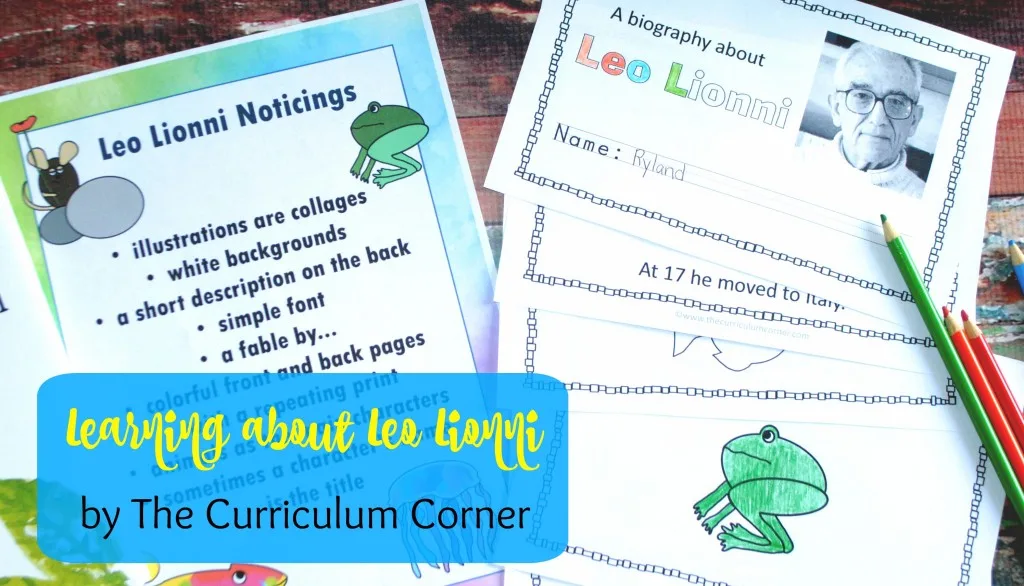
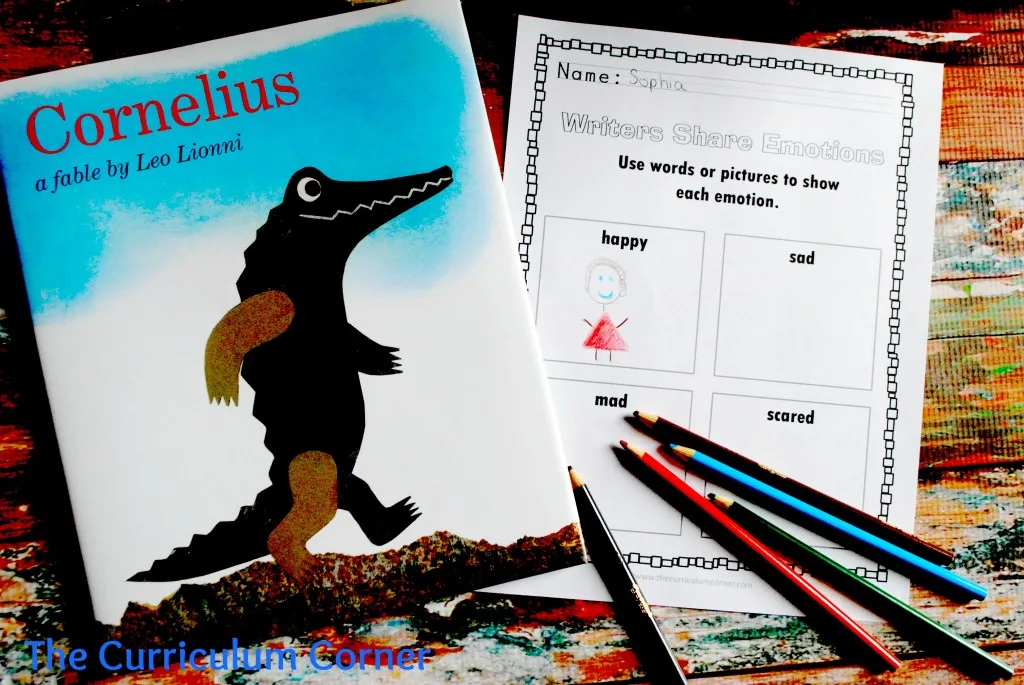
Leo Lionni Books in the Classroom - The Curriculum Corner 123
Saturday 25th of March 2017
[…] but if you head over to our kindergarten site you will find a completed noticings chart in the Lionni Writing Unit we […]
Susie Gularte
Saturday 7th of May 2016
You are phenomenal. Thank you so much for sharing your resources.